Remarkable Kailashanatha Temple And Unique Passage Of Life Cycle Including Aging, Death And Rebirth
A. Sutherland - AncientPages.com - The famous Kailashanatha Temple in Kanchipuram, Tami Nadu India, was built in the 8th century during the reign of a South Indian Pallava Dynasty (275 CE to 897 CE) by the great king Raja Simha Pallava.
Kailasanathar Temple in Kanchipuram, Tamil Nadu. Image credit: Ssriram mt/wikipedia
It is a temple closely connected with the life history of saint Poosalaar , who was a devotee of Lord Shiva.
It is the largest temple built by the Pallavas, who became passionate temple builders. These kings were the first to build stone temples in the Tamil country and later experimented with carving temples in stone.
Dedicated to Lord Shiva, Kailashanatha Temple (means “Lord of the Cosmic Mountain”), was built in the tradition of temples that celebrate the cosmic mountain with the summit, which is not only the highest point of the earth but also the earth's navel, the point at which the Creation began.
Kailashanatha Temple is the oldest in Kanchipuram, a former Pallava capital (7th - 9th century) and one of the seven sacred cities under Hinduism. The city is approx. 75 kilometers (47 mi) from Chennai, the capital city of Tamil Nadu.
Some of the oldest books of the Sanskrit written about the 3rd or 2nd centuries BC, mention Kanchipuram, which is believed to have been part of the mythical Dravida Kingdom of the Mahabharatha.
It is the oldest temple in Kanchipuram, which was the capital city during the Pallava Dynasty and one of the seven sacred cities under Hinduism. Image credit: Ilamurugan
The temple, of which the architect is unknown, was commissioned by Narasimhavarman II commonly known as Rajasimha (r. 700 - 728 CE), a ruler of the Pallava kingdom, who is also credited with the construction of several other temples.
The structure is decorated with a large number of carvings, including many half-animal deities, especially popular during the early Dravidian architectural period.
There are 58 shrines, built into niches, which are dedicated to various forms of Shiva. The main shrine has a 16 sided Shivalinga carved in black granite. The Shivalinga in this temple is 10 feet high.
Kailasanathar Temple with an inner court or the circumambulatory passage with 58 sub shrines. Image credit: R. Mayooranathan - Public Domain
Perhaps the most remarkable and very unique feature of the temple is the so-called “circumambulatory passage”. This is a place associated with many great symbols.
The passage enables moving around a sacred object or idol. After climbing seven steps to reach this most unusual passage, devotees must crawl through it.
The crawling has a symbolic meaning of great importance; it is namely similar to passing through the life cycle including the aging process, death, and rebirth.
Crawling and finally leaving the passage symbolize coming out of the mother's womb and also explains Hindu's belief in rebirth.
Written by – A. Sutherland AncientPages.com Staff Writer
Copyright © AncientPages.com All rights reserved. This material may not be published, broadcast, rewritten or redistributed in whole or part without the express written permission of AncientPages.com
Expand for referencesMore From Ancient Pages
-
 Skull Of Mysterious, Extinct Cousin Of Neanderthals Recreated From A Fossilized Finger
Archaeology | Sep 19, 2019
Skull Of Mysterious, Extinct Cousin Of Neanderthals Recreated From A Fossilized Finger
Archaeology | Sep 19, 2019 -
 3,400-Year-Old Cuneiform Tablet Excavated In Old City Of Alalah
Archaeology | Aug 23, 2020
3,400-Year-Old Cuneiform Tablet Excavated In Old City Of Alalah
Archaeology | Aug 23, 2020 -
 Battle Of Himera: New Study That Contradicts Historical Accounts
News | May 24, 2021
Battle Of Himera: New Study That Contradicts Historical Accounts
News | May 24, 2021 -
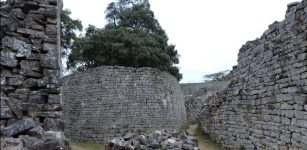 Great Ruins of Zimbabwe: Unsolved Secrets Of Bizarre Buildings Without Windows And Doors
Civilizations | Jun 24, 2015
Great Ruins of Zimbabwe: Unsolved Secrets Of Bizarre Buildings Without Windows And Doors
Civilizations | Jun 24, 2015 -
 Home Of The Gods – Arrival Of Golden Ships – Part 1
Ancient Mysteries | Jun 12, 2018
Home Of The Gods – Arrival Of Golden Ships – Part 1
Ancient Mysteries | Jun 12, 2018 -
 Secretly Engraved Woman Name Discovered In Medieval Manuscript – Who Was Eadburg?
Archaeology | Dec 3, 2022
Secretly Engraved Woman Name Discovered In Medieval Manuscript – Who Was Eadburg?
Archaeology | Dec 3, 2022 -
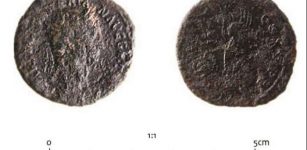 Hoard Of Roman Bronze Coins Turns Out To Be Offering For Safe Crossing
Archaeology | Jul 2, 2021
Hoard Of Roman Bronze Coins Turns Out To Be Offering For Safe Crossing
Archaeology | Jul 2, 2021 -
 Viking House The Size Of Two Tennis Courts Discovered In Norway
Archaeology | Jul 20, 2023
Viking House The Size Of Two Tennis Courts Discovered In Norway
Archaeology | Jul 20, 2023 -
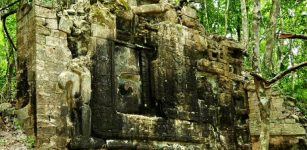 Lost Ancient Mayan Cities Lagunita And Tamchen Hidden In The Jungle Reveal Their Secrets
Featured Stories | Jun 25, 2017
Lost Ancient Mayan Cities Lagunita And Tamchen Hidden In The Jungle Reveal Their Secrets
Featured Stories | Jun 25, 2017 -
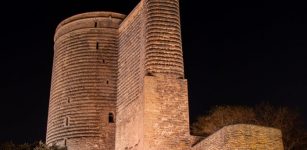 Baku’s Mysterious Maiden Tower – Legend Of The Daughter Of Fire Who Saved The Sacred Temple May Be True
Featured Stories | Jul 5, 2021
Baku’s Mysterious Maiden Tower – Legend Of The Daughter Of Fire Who Saved The Sacred Temple May Be True
Featured Stories | Jul 5, 2021 -
 Posca: ‘Wine Of The People’ Was Popular In Ancient Rome And Greece
Ancient History Facts | Sep 26, 2018
Posca: ‘Wine Of The People’ Was Popular In Ancient Rome And Greece
Ancient History Facts | Sep 26, 2018 -
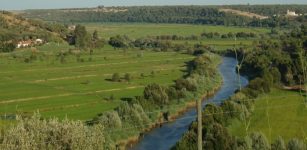 Mummification In Europe May Be Older Than Previously Known – 8,000-Year-Old Evidence Presented
Archaeology | Mar 4, 2022
Mummification In Europe May Be Older Than Previously Known – 8,000-Year-Old Evidence Presented
Archaeology | Mar 4, 2022 -
 ‘King Arthur’s Hall’ Is 4,000 Years Older Than Previously Thought
Archaeology | Nov 12, 2024
‘King Arthur’s Hall’ Is 4,000 Years Older Than Previously Thought
Archaeology | Nov 12, 2024 -
 Chilling Graffiti Found In 1,600-Year-Old Roman Prison In Corinth, Greece
Archaeology | Aug 19, 2024
Chilling Graffiti Found In 1,600-Year-Old Roman Prison In Corinth, Greece
Archaeology | Aug 19, 2024 -
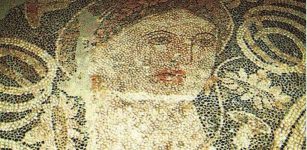 Wax Tablets Reveal Ancient Secrets of The Illyrians
Artifacts | Sep 5, 2015
Wax Tablets Reveal Ancient Secrets of The Illyrians
Artifacts | Sep 5, 2015 -
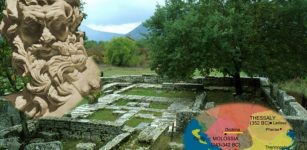 Oldest Greek Oracle At Dodona And Zeus Sacred Oak Tree – Where Oracle of Dodona: Sacred Place Where Gods Spoke To Humans For The First Time
Featured Stories | May 24, 2016
Oldest Greek Oracle At Dodona And Zeus Sacred Oak Tree – Where Oracle of Dodona: Sacred Place Where Gods Spoke To Humans For The First Time
Featured Stories | May 24, 2016 -
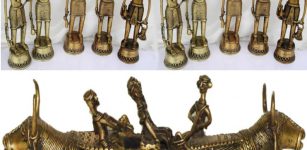 Telangana And Great Ancient Iron Masterwork Of Skilled Blacksmiths Of India
Ancient Technology | May 26, 2017
Telangana And Great Ancient Iron Masterwork Of Skilled Blacksmiths Of India
Ancient Technology | May 26, 2017 -
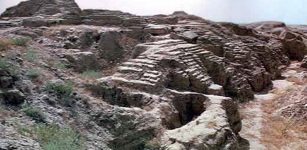 Ashur – First Capital And Powerful Religious Center Of The Assyrian Empire
Featured Stories | Jun 28, 2019
Ashur – First Capital And Powerful Religious Center Of The Assyrian Empire
Featured Stories | Jun 28, 2019 -
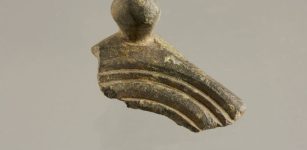 Piece Of Puzzling Roman Artifact Discovered In Belgium
Archaeology | Feb 16, 2023
Piece Of Puzzling Roman Artifact Discovered In Belgium
Archaeology | Feb 16, 2023 -
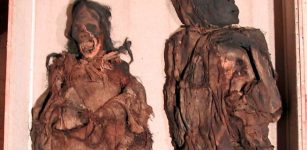 Scientific ‘Detective Work’ With South American Mummies Reveals They Were Brutally Murdered
Archaeology | Sep 9, 2022
Scientific ‘Detective Work’ With South American Mummies Reveals They Were Brutally Murdered
Archaeology | Sep 9, 2022



